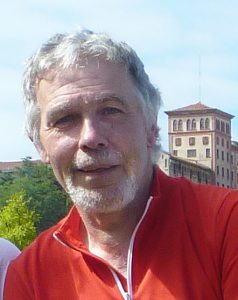EXHIBITS
William Henry Bartlett’s Ottawa River (opens May 13)
Artist W. H. Bartlett toured British America in 1838 preparing sepia sketches for folio volumes of engraved views. C.H. Pinhey remarked on the exaggerated grandeur of his March, on Lake Chaudière. But Bartlett’s Ottawa River views found a ready market with a British audience educated in the romantic tradition, and his engravings remain the best-known views of nineteenth-century Canada. They have also been adapted to numerous other formats, gracing transfer-printed tableware, for instance, over several generations. The exhibition incorporates all of W.H. Bartlett’s views of the Ottawa River, many of them still recognizable today, along with an original subscriber’s portfolio, a volume of his Canadian Scenery Illustrated (London 1842), and examples of local views reproduced on vintage ceramics.
The Foundation remounts this popular exhibit from 2005 to complement the City’s new exhibit on the transition from water to rail communications.

Pinhey’s Point meets the Sixties (opens May 13)
The Pinhey property was first on the National Capital Commission’s agenda when it turned its attention to heritage conservation in 1959. Its purchase was announced, prematurely, with plans for Centennial restoration and a steamboat to Aylmer. Explore with us what happened, and what didn’t, and what set us on the course to where we are today. View the original 1967 heritage plaque (how is today’s different?) and a rare film of a visit to Ruth Pinhey, Horaceville, and Old St Mary’s in 1968.

Lieut. Lindsay Drummond, R.F.C.: Identification of a war grave in Belgium (opens June 17)
Lindsay Drummond was a grandson of Charles Hamnett Pinhey, an RMC graduate, and one of four brothers to serve in the Great War. For decades his grave was unidentified, but following thorough investigation by a Belgian researcher new monuments were dedicated to his memory on the centenary of his death. Follow this remarkable story.

Collections Spotlight: Hamnett K. Pinhey II’s Fenian Raid medal (opens July)
Hamnett Kirkes Pinhey II helped defend Canada against Irish-American invaders in 1870 when he was barely 16. His medal for this service was returned to Horaceville by a private collector last year, and joins a button from his military tunic. We pay tribute to the late John Swan for his kindness in remembering the Foundation.

TRAVELLING EXHIBIT
Whose Astrolabe? Origins and cultural ownership of a Canadian icon
Department of History, 4th floor Paterson Hall, Carleton University, to August 31
EVENTS
PUBLIC LECTURE SERIES: World War Commemorations
(Admission free. Refreshments will follow each lecture.)
Finding Canadian War Graves and Aircraft in Flanders (Sunday June 17, 7 pm at Pinhey’s Point Historic Site)
The Foundation is pleased to provide an opportunity for Ottawans to meet Dirk Decuypere, the Belgian researcher who identified the grave of Lieut. Lindsay Drummond of the Royal Flying Corps, whose mother was Catherine Lucy Pinhey. Dirk will speak about his research that resulted in the re-marking of the last resting places of Canadians Lindsay Drummond, Thomas Arthur Metheral and Robert Smith Bennie a century after their deaths. Since his youth Dirk has researched the military history of West Flanders in the First and Second World Wars, his chief interest being the air war over West Flanders.
Dirk Decuypere is the author of several books and articles. In-depth case studies about individual casualties have always been a priority, aiming to identify military personnel who, like Drummond, had been misidentified in original records and laid to rest anonymously.
Dirk is co-founder of the aviation archaeology group Huyghe-Decuypere, which works to research and pinpoint WW2 crash sites in West Flanders. In some cases this has led to the excavation of the wrecked aircraft. The group works in consultation with the Flanders Heritage Agency and various museums.
He will speak about his research on the three Canadians commemorated in Belgium in 2017, especially Lieut. Drummond, and about his work in identifying and recovering WW2 aircraft.

First World War Art: Picturing the Unimaginable (Monday July 30, 7 p.m. at Pinhey’s Point Historic Site)
The First World War was an event of unimaginable violence and horror that killed or wounded 40 million people. This talk explores how visual artists used their work both to record the war and to try to come to terms with its trauma.
Dr Brian Foss is Director of the School for Studies in Art and Culture at Carleton University. A historian of Canadian art of the nineteenth and twentieth centuries, Brian has contributed to exhibitions and publications about Homer Watson, Molly Lamb Bobak, Mary Hiester Reid, Miller Brittain, and Edwin Holgate, and curated exhibitions on military views of Lower Canada, and visual representations of rural Quebec. In 2015, with Jacques Des Rochers of the Montreal Museum of Fine Arts, Brian organized the exhibition 1920s Modernism in Montreal: The Beaver Hall Group, which won the 2016 Award of Outstanding Achievement for an Art Exhibition from the Canadian Museums Association, and co-authored the accompanying award-winning catalogue. Brian has a longstanding interest in the relationship between art and war, and is the author of War Paint: Art, War, State and Identity in Britain 1939–45 (Yale University Press, 2007). He contributed two articles to Sacha Llewellyn and Paul Liss, eds., WW II: War Pictures by British Artists (London: Liss Llewellyn Fine Arts, 2016).

To view the Foundation’s current exhibits and events: Current
To view our other past exhibits and events: Exhibit/Event Archive
